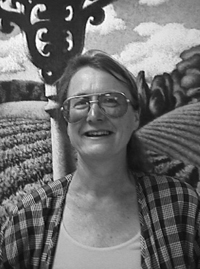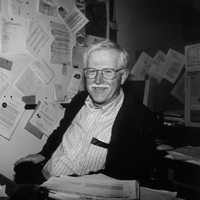
Features
Production
Research
Newly developed spud wins award
wins award
April 22, 2008 By Kathy Birt
It was a long-spun but successful journey that brought a new P.E.I. potato variety to a state of discovery and fame.
 |
| Helen Fisher |
 |
| Neil Miles |
It was a long-spun but successful journey that brought a new P.E.I. potato variety to a state of discovery and fame.
For Joyce and Dr. Robert Coffin of Long Lane Farm in Graham’s Road, P.E.I., developing this new potato garnered them the Canadian Horticulture Council Trophy at the Royal Winter Fair in Toronto, Ont., last November.
And to begin reaping the benefits of a total of 14 years of research, the couple is looking at collecting royalties should the potato variety become successful in the marketplace.
Prospect is the apt title they chose for the award-winning variety and all signs at the onset of the competition (at the Royal), indicated that choosing a winner was serious business. “There were 35 competitors in the table stock category and 10 in seed,” notes Dr. Coffin.
He is adamantly clear in pointing out that he and his wife are potato breeders, not growers. “Growers have their challenges and our (challenges) are completely different.”
The couple’s scientific knowledge combined equals five university degrees in the science and plant-breeding field, all of which are essential ingredients for such intensive research.
While doing plant research at Cavendish Farms and lecturing at the University of P.E.I., Dr. Coffin and Joyce put their scientific skills and education to the test and came up with their potato seed winner.
They maintain that, on average, it can take 10 years plus to develop a new potato variety. The Coffins took a little longer than that, having to perform their research and work around their on-going daily schedules and routine. Work and research for the couple began in 1990 when they chose the parent seeds and began the cross pollination in a small greenhouse on their property. The female parent seed was Shepody and Russett was used for the male parent seed.
“The genes came from a potato gene bank repository, operated by the Canadian Food Inspection agency (CFIA) in B.C.,” explains Joyce, adding the bank is no longer operating.
“The cross pollination produces the seed balls and we squeeze the seed out,” says Dr. Coffin.
He points out that if they saved a thousand seeds from a cross, “Every seed would be different. Most will produce potatoes inferior to the parent.”
Hence, finding the “good seed” meant the couple patiently sifted through thousands to obtain what Joyce calls, “A seed that is half decent.” In a small plot about five feet wide and 75 feet long, the Coffins planted what they termed to be the best seeds from two years of research. “These are extremely tiny plants,” Joyce explains.
The subsequent planting is as carefully orchestrated as is the selection of the individual seedlings. “They are planted five-to-six-feet apart on three to four acres of land. We don’t want to mix them up when they are dug,” points out Dr. Coffin.
And harvesting from this plot meant digging thousands of tubers in all sizes, from as small as a jellybean to as large as a Ping Pong ball. The couple points out that looking for the best of the diggings is not necessarily what it’s all about.
Dr.Coffin says they go through their selections carefully, looking to compare and weed out potatoes showing negative traits. Joyce adds that there may be some that have a propensity to excessive scab while others may be susceptible to sunburn.
She says over the years of research, there were times of intense activity and times when the pace went slow. “There were times to plant, to harvest, to grade ”
As in all this research, the grading, too, proved to be a process that took careful scrutiny. “The long ones may have French fry potential,” explains Dr. Coffin, adding, “We look at yield, tuber size, maturity, disease resistance, dormancy, storage life, and starch concentration. There’s a huge list of concerns to look at.”
But grading was not the end of the work in developing this new variety.
“We had to go through replicating trials with existing varieties and our potato must be equal or better in yield and quality if it is to make it in the marketplace,” says Dr. Coffin.
The Coffins carried the investment in this lengthy research and now are looking at the “prospect” of recapturing on that investment in the event that the new Island potato will be grown commercially. Dr. Coffin explains that plant-breeders rights recognize the breeders by ensuring collection of royalties for a total of 17 years in Canada.
Reflecting on the research, he says, “It’s a unique thing to have a potato breeding program with our own variety registered with the Canadian Food Inspection Agency (CFIA).
For Joyce, seeing the excitement of the judges at the Royal and coming out on top personalized this collaborative endeavour.
“It has created an awareness (that) a new variety can make a contribution to the (potato) industry in many ways,” said Dr. Coffin.
Print this page